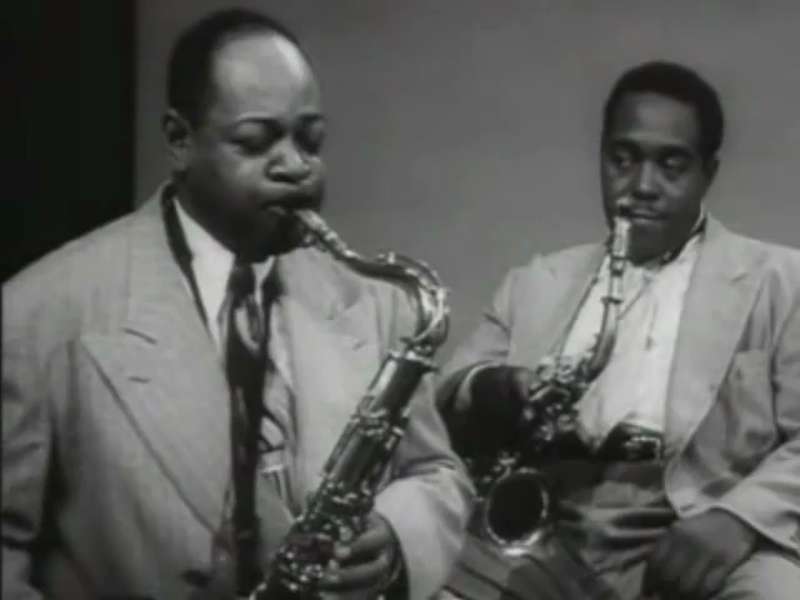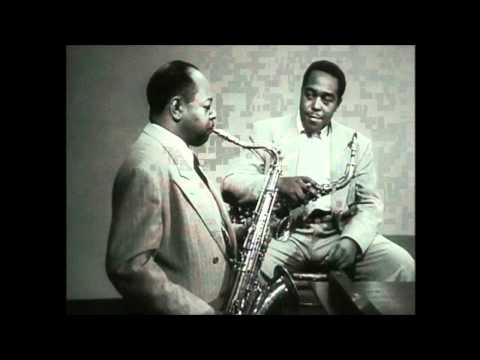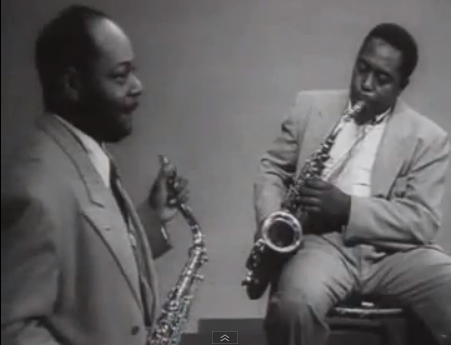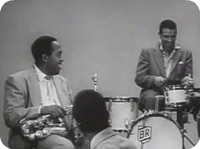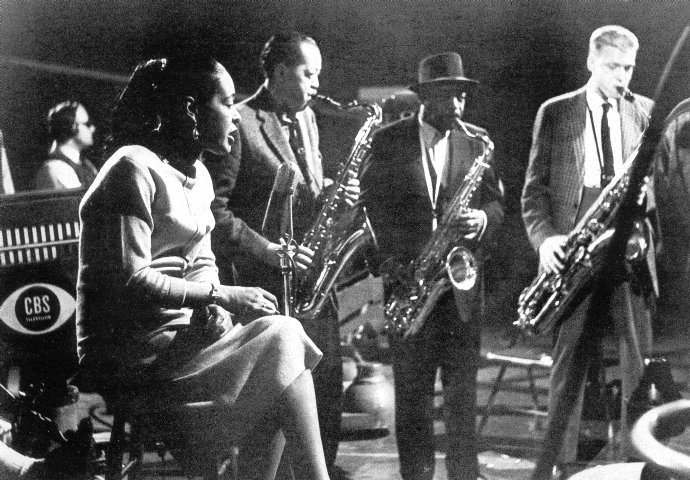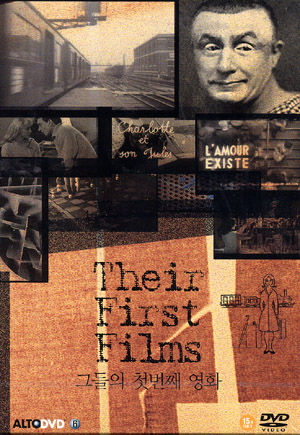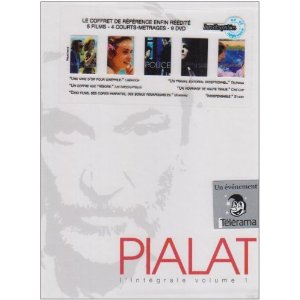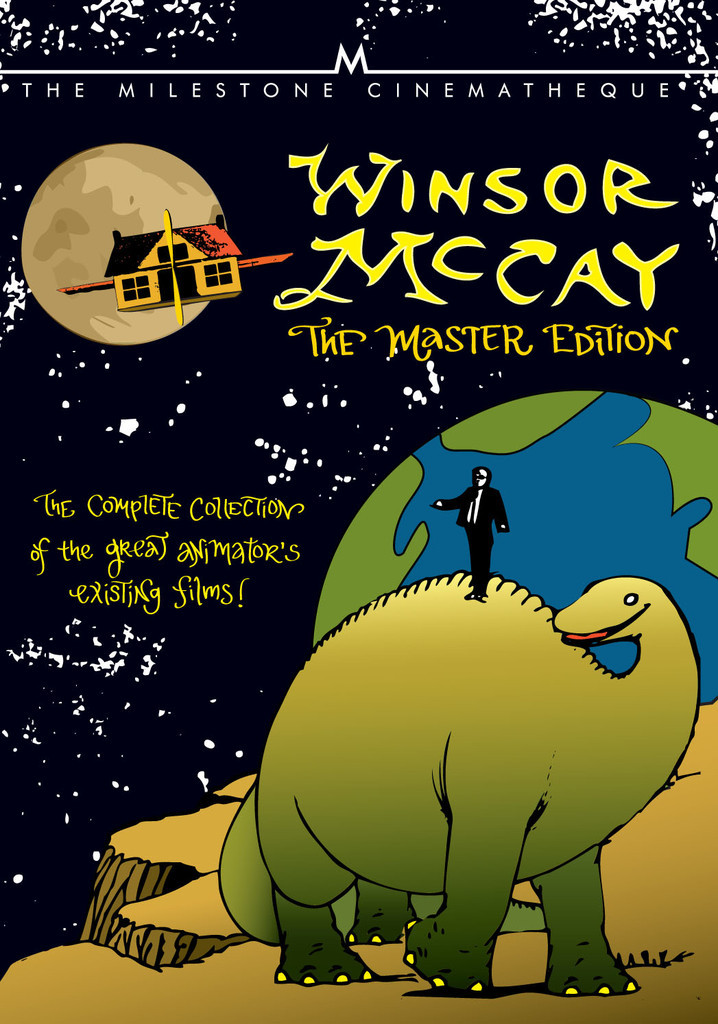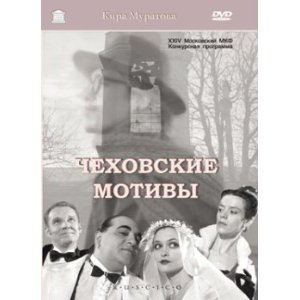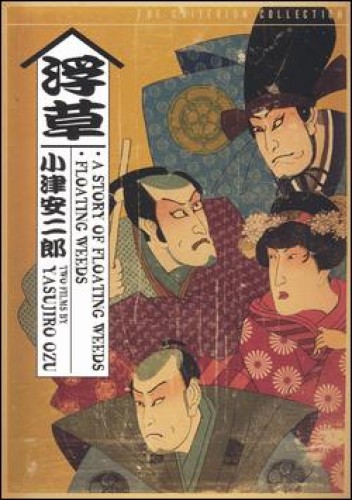From Cinema Scope #20 (Autumn 2004). — J.R.
One of the most flagrant lacks in most jazz films is the spectacle of musicians listening to each another. Back in the early 60s, when I was frequenting a lot of downtown Manhattan jazz clubs, some of my biggest thrills came from visiting spots where many of the best and most attentive listeners were those on the bandstand —- not only the classic John Coltrane Quartet at the now defunct Half Note, where McCoy Tyner, Jimmy Garrison, Elvin Jones, and the serene leader were all meditating on one another’s solos in a kind of trance, but Lennie Tristano at the same club taping his own sets with Warne Marsh and Lee Konitz and then playing them back in the wee hours, while he sat alone at the bar. Sitting a few seats away from him one night, I felt I was getting an education in listening by observing this prodigious blind pianist’s highly physical responses, both positive and negative, to his own solos.
No less precious was the opportunity to attend the Jazz Gallery on St. Mark’s Place one weeknight when Miles Davis, Coltrane, Cannonball Adderley, J.J. Johnson, Bill Evans, Paul Chambers, and Philly Joe Jones were all holding forth in alternation with Teddy Wilson’s trio for (I kid you not) the price of a one-dollar admission, at least for students. There I had the best demonstration imaginable of why Miles said he preferred to leave the stage immediately after his solos —- in order to listen to his own sidemen without distraction. [2012 footnote: I’ve just learned that this engagement was in late December 1961; the club was subsequently converted into Theatre 80 St. Marks, seen in the above photograph.]
The Greatest Jazz Films Ever — a multiregional two-disc set released last year in Spain, found at a Chicago chain store last summer—-contains the best film footage of Charlie Parker in existence, shot by Life photographer Gjon Mili in his own studio. Bird is playing two brief numbers with Coleman Hawkins, Hank Jones, Ray Brown, and Buddy Rich (all miming on their instruments to playback), in a never-completed 1950 follow-up to Mili’s Oscar-nominated Jammin’ the Blues (a 1944 short with Lester Young, also produced by Norman Granz). Parker is completely relaxed and very charismatic — neither of which he is in his more routine TV performance of “Hot House,” the only other film record of him with sound that I’m aware of. And watching him listen with such visible and infectious pleasure to both Hawkins and Rich is an uncommon delight. (So is the bonus of Lester Young with the same rhythm section, from the same session.)
Published accounts of this Parker footage are sparse and inexact — according to Gary Giddins’ 1987 book Celebrating Bird, the soundtrack was lost, and most accounts are even vaguer than that. So I was startled to come across it six years ago in Tokyo on a Japanese video called Improvisation, introduced by Granz himself. This year, I included it in a list of my 1000 favorite films that I published in my collection Essential Cinema: On the Necessity of Film Canons (Johns Hopkins University Press), but I had few hopes of ever seeing it crop up anywhere else.
The two-disc set, which includes the same material without the Granz intro —- along with other items in black and white, mostly from TV (the aforementioned “Hot House,” The Sound of Jazz, The Sound of Miles Davis, two numbers each from Ahmad Jamal and Ben Webster, and Jammin’ the Blues) — perversely and I believe inaccurately boasts that The Sound of Jazz is appearing for the “first time on DVD,” but doesn’t bother to make any such claim about the Parker footage. Am I missing something? To all appearances, not even the producers of this compilation know what they have, and this is emblematic nowadays of the kind of buried treasures one sometimes comes across on DVDs.
A different kind of example of what I mean is a recent Korean DVD on PAL, misleadingly called Their First Films, which I stumbled upon while browsing on the www.xploitedcinema.com web site [2012: no longer active, alas]. It’s hard to think of many short films harder to access anywhere, including France, than Jean-Pierre Melville’s 24 Heures de la vie d’un clown (1946), Alain Resnais’ dazzling color and ‘Scope La chant du styrène (1957), Jacques Rivette’s relatively humdrum Le coup de berger (1957), Jacques Doniol-Valcroze’s Les surmènes (1958), Maurice Pialat’s L’amour existe (1960), and Patrice Leconte’s Le laboratoire de l’angoisse. But these films and a couple of only slightly less rare 1958 shorts by Jean-Luc Godard, Charlotte et son Jules and Histoire d’eau (the first with Godard dubbing Jean-Paul Belmondo, the latter codirected by François Truffaut), all produced by Pierre Braunberger, have just become available in beautiful newly struck prints, with optional English or Korean subtitles. I can’t vouch for the quality of the English text in the Resnais short, which has a virtually untranslatable narration in Alexandrines written by Raymond Queneau. But the only other DVD version of this film — on a French DVD of Muriel that I prematurely recommended in my last column — was both unsubtitled and so out of sync that I’ve subsequently heard that it’s been pulled from the market at Resnais’ request.
Unlike the jazz package, this was clearly put together with care and attention, yet apparently only the Melville, the Pialat, and possibly the Rivette and the Leconte actually qualify as first films. (The Rivette was preceded by a couple of amateur efforts that he subsequently suppressed, and the Leconte isn’t even mentioned in the filmography found on the Internet Movie Database.) Yet who wants to look this gift horse in the mouth? A much more interesting issue, at least to me, is how that Parker footage initially found its way to Japan and Spain and why those Braunberger shorts surfaced in Korea.
***
Where and how certain things become available remain enduring mysteries. It’s both “logical” and unsurprising that a deluxe new box set devoted to Pialat — containing Nous ne vieillirons pas ensemble (along with Pialat’s novel of the same title in paperback), A nos amours, Police, Sous le soleil de Satan, Van Gogh, a small hardcover book of notes, and a good many bonuses, including several Pialat shorts (though not L’amour existe) — comes from France and is unsubtitled, and that a fine “complete” edition of Winsor McCay on film, along with both commentary and a documentary by John Canemaker, comes from Milestone in the U.S. But it’s harder to figure out why Charles Burnett’s To Sleep with Anger and Melville’s Leon Morin, prêtre and Le doulos should all be available now only on region 2 DVDs from the BFI in England (albeit in lovely prints), or why Robert Bresson’s A Man Escaped and Lancelot of the Lake should be released by New Yorker in the U.S. ahead of any French editions (although, according to the Masters of Cinema web site, MK 2 is planning to release several other Bresson features next year, and both Nouveaux Pictures in the UK and Criterion in the U.S. are preparing Au hasard Balthazar and Mouchette). And when it comes to why substantial box sets devoted to Abbas Kiarostami and Theo Angelopoulos can presently be purchased only with Japanese subtitles, your guess is as good as mine. (If you’re sufficiently smitten with Godard’s 2 ou 3 choses que je sais d’elle to put up with non-optional Japanese subtitles, you can also order that from the Japanese Amazon web site, as I did.)
Flicker Alley’s exciting two-disc version of Louis Feuillade’s 12-part 1917 serial Judex is even more welcome than the Bressons insofar as the scarcity of Feuillade serials in the U.S. for the better part of the past century —- that is, ever since their initial releases —- has condemned this major filmmaker to marginal status in most Anglo-American accounts of the history of world cinema. Personally, I prefer Feuillade’s work to D. W. Griffith’s, so it’s immensely satisfying that three of his serials have now made it onto DVD. (A superb edition of Fantômas came out in France a few years ago, with interactive extras that make watching it akin to wandering through a funhouse in a theme park, and Water Bearer in this country has already brought us Les vampires.) But when can we hope to see Tih Minh, shot on the Côte d’Azur, my favorite of them all? And assuming that we can finally get our hands on it, will it be the longer version held by the Cinémathèque Belgique or the shorter restored version of the Cinémathèque Française?
***
I’m also eagerly awaiting the long-overdue release of an English-subtitled edition of Kira Muratova’s The Asthenic Syndrome (1987), a film I explore at some length in Essential Cinema. But until that occurs, I can warmly recommend Muratova’s more recent and even crazier Chekhovian Motifs (2002), subtitled in no less than five languages (Russian, English, French, German, and Spanish) on an NTSC DVD that has “no zone restrictions”. Go to www.rbcmp3.com for more particulars, and don’t be put off by the fact that virtually everything written on the film’s box is in Russian.
The arrival of another neglected but major Russian master from a much earlier period on an American DVD is also cause for celebration. If you’ve been wondering when you’ll ever get to see a film by Boris Barnet, David Shepard at Blackhawk Films has just brought out two on a single disc, The Girl with the Hatbox (1927, silent) and Outskirts/Okraina (1933, sound). I have to admit that I’ve never completely warmed to the first of these, in spite of its obvious charms. But the latter, which I finally caught up with early this year (and wrote about in the Chicago Reader), completely blew me away. Set in a remote Russian village during World War 1, it’s one of the key masterpieces of early sound Russian cinema — along with Dovzhenko’s Ivan, Vertov’s Enthusiasm, and Pudovkin’s Deserter (the latter of which is also available from Blackhawk, paired with The End of St. Petersburg) —- that practically no one has seen. For once I can agree with the ad copy on the box: “Surely if American film historians and critics had seen this movie it would claim many pages in their books.”
***
I suppose it could be argued that most of the films I’ve been discussing in this column qualify as esoterica rather than as classics. But I hasten to add that this “esoteric” profile is largely a matter of their former lack of availability rather than anything so mundane as anyone’s weighted critical judgment. I’d even go further and argue that they’ve mainly been ignored or mislabeled simply because they’ve been displaced. Throughout the history of film, prioritizing done by film distributors and exhibitors and now DVD producers and distributors inevitably becomes a form of canonizing, even if previous canonizing obviously influences some of their decisions.
All sorts of factors come into play. Given the enthusiasm of Roger Ebert for Yasujiro Ozu’s Floating Weeds, it was logical for Criterion to make that an early choice for an Ozu release, and no less logical for them to pair it with A Story of Floating Weeds, Ozu’s silent version of the same story —- a no-brainer coupling like their recent decision to release Jean Renoir’s and Akira Kurosawa’s separate versions of Maxim Gorky’s The Lower Depths in the same package. But what if this encouraged them to delay or even decide against releasing any of the five silent Ozu masterpieces I cited, among other worthy candidates, in my last Winter column for Cinema Scope, all of which strike me as being much greater films? Willy-nilly, A Story of Floating Weeds would then become canonized as the silent Ozu film while the others would survive as esoterica.
And what about Kenji Mizoguchi?Artificial Eye in the U.K. has recently brought out region 2 discs of The Life of O-Haru (1952), one of his incontestable canonical masterpieces, and the much less well-known The Lady of Mushashino (1951), which I can’t recall having ever seen.
It’s impossible for me to judge in advance whether the second feature is as worthy of being prioritized as the first, and for all I know print availability may have been the decisive factor rather than any sort of critical valuation. In both cases, it’s wonderful that these works are now on DVD, disappointing that the prints used are so dark, and daunting to consider how much decanonizing and recanonizing is going on because of these and other factors.



